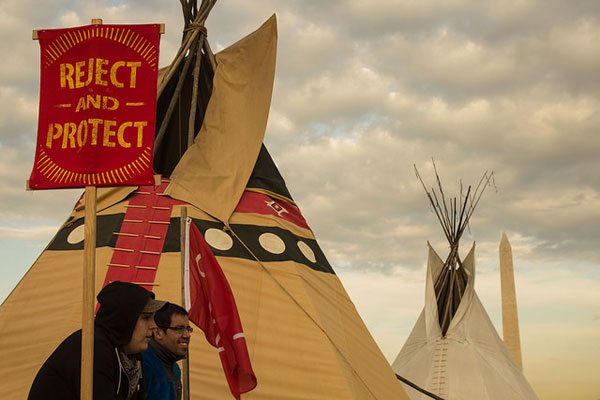
November 20, 2017; Reuters and VICE News
TransCanada shut down a portion of its highly contested Keystone Pipeline, which transports oil from the Canadian tar sands to refineries in the U.S., at 6 a.m. on Thursday after 210,000 gallons, or around 5,000 barrels, of oil spilled across South Dakota farmland. The type of oil in the pipeline, however, makes pinpointing the size of the spill more difficult than usual, worrying local environmental groups and landowners about its environmental effects.
But this past week, by a 3-2 vote, the Nebraska Public Service Commission cleared the way for a long-planned pipeline linking Canada’s remote Alberta oil sands to refineries in the United States. They might have lost a battle, but Nebraska’s activist landowners and conservationists vow the war against the Keystone Pipeline is far from over.
The opposition to the President Trump–supported project started out as a grassroots movement but quickly galvanized into a sophisticated advocacy group that has mixed public expressions of resistance with court advocacy which is where the group is hoping to tie the project up after the 3-2 vote.
Art Tanderup, a landowner on the Keystone XL route, had this to say on the Bold Nebraska blog:
We are disappointed that the Commissioners approved Keystone XL, and have chosen to place the route through the most fragile soils and over and through the Ogallala Aquifer—refusing to see the value of our natural resources,” said Art Tanderup, a farmer on the Keystone XL pipeline route near Neligh, Nebraska.
Sign up for our free newsletters
Subscribe to NPQ's newsletters to have our top stories delivered directly to your inbox.
By signing up, you agree to our privacy policy and terms of use, and to receive messages from NPQ and our partners.
“The PSC has decided that a foreign corporation is more important than Nebraska citizens. Their message is that it is OK to abuse property rights, land use rights and indigenous rights. When the state should be moving forward with more renewable energies and a statewide energy plan, the Commissioners are allowing the dirtiest of fossil fuels to accelerate climate change.”
The ability to seize land for public use afforded by the Fifth Amendment is still hotly contested. In addition to conservationists worrying about a threat to the water table, land preservation, and the environment, there’s an eminent domain aspect that makes this a case to watch. Capitalizing on this, Bold Nebraska is even selling “No Eminent Domain for Private Gain” t-shirts on their website.
One of the most famous pieces of case law on eminent domain is Kelo v. New London. The lawsuit had its day in the highest court in the land in 2005 and was recently made into a movie. Little Pink House stars Oscar nominee Catherine Keener as Susette Kelo, the nurse who refused to slink off into the night and accept a Connecticut city’s decision to force her out of the small home she had fixed up and loved. In Kelo’s case, a local private entity wanted the land for development. The twist on the Nebraska case is that it’s not only a private corporation, but a foreign private corporation making a land grab.
Right before the decision was released by the Nebraska commission, a sister project also managed by TransCanada made news. The hotly contested Keystone Pipeline in South Dakota belched an estimated 200,000–600,000 gallons of oil onto the land during the largest leak the project has experienced to date. According to CNN, crews shut down the pipeline Thursday morning and officials are investigating the cause of the leak, which occurred about three miles southeast of the town of Amherst, said Brian Walsh, a spokesman for the state’s Department of Environment and Natural Resources.
Back in Nebraska, the pipeline might face another opponent other than bad PR and advocacy groups. Market prices for crude have fallen significantly since the project was proposed. TransCanada is still studying its commercial viability after a surge in US drilling that has cut crude oil prices roughly in half.—Carrie Collins-Fadell













